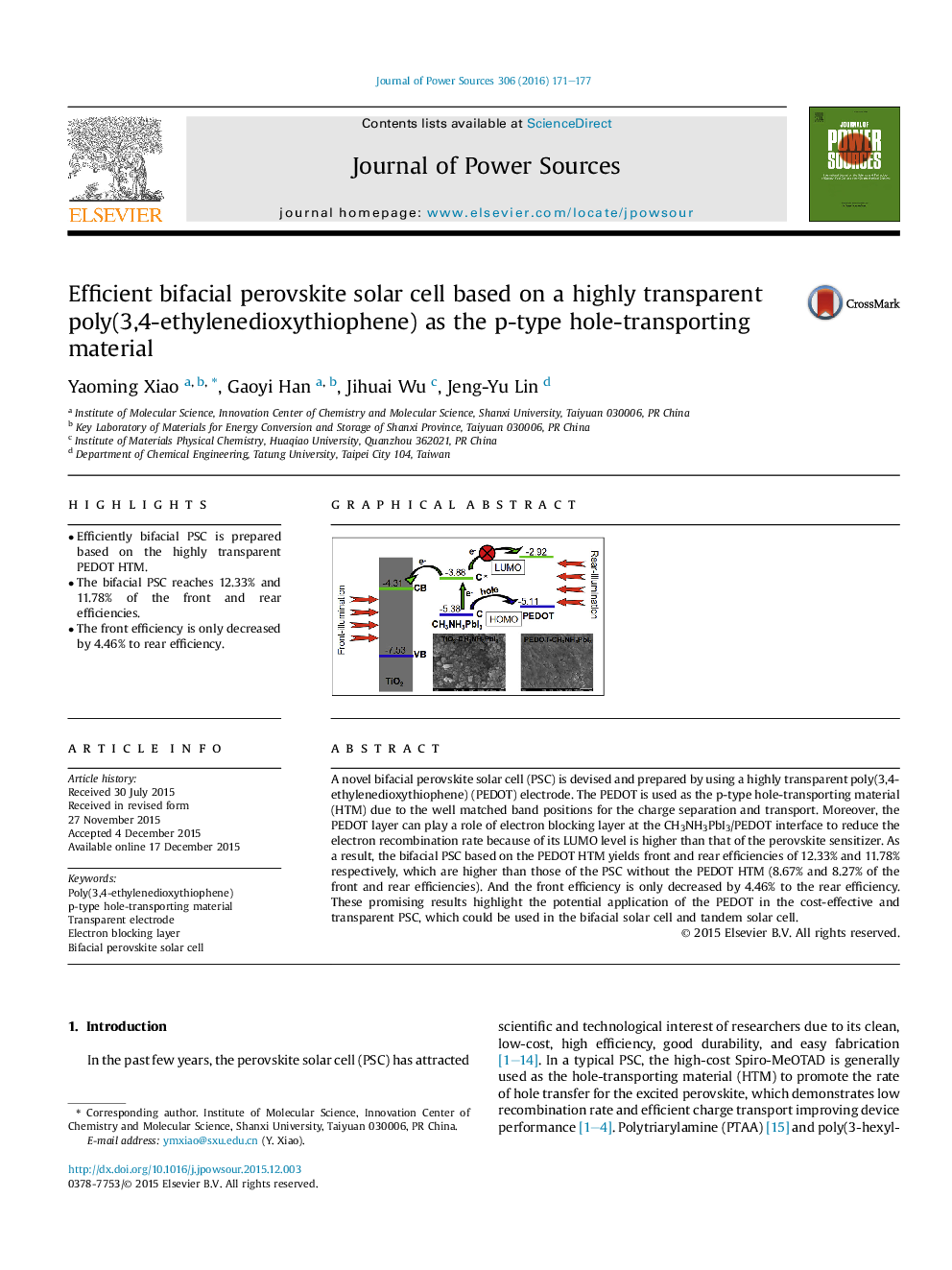| Article ID | Journal | Published Year | Pages | File Type |
|---|---|---|---|---|
| 1292423 | Journal of Power Sources | 2016 | 7 Pages |
•Efficiently bifacial PSC is prepared based on the highly transparent PEDOT HTM.•The bifacial PSC reaches 12.33% and 11.78% of the front and rear efficiencies.•The front efficiency is only decreased by 4.46% to rear efficiency.
A novel bifacial perovskite solar cell (PSC) is devised and prepared by using a highly transparent poly(3,4-ethylenedioxythiophene) (PEDOT) electrode. The PEDOT is used as the p-type hole-transporting material (HTM) due to the well matched band positions for the charge separation and transport. Moreover, the PEDOT layer can play a role of electron blocking layer at the CH3NH3PbI3/PEDOT interface to reduce the electron recombination rate because of its LUMO level is higher than that of the perovskite sensitizer. As a result, the bifacial PSC based on the PEDOT HTM yields front and rear efficiencies of 12.33% and 11.78% respectively, which are higher than those of the PSC without the PEDOT HTM (8.67% and 8.27% of the front and rear efficiencies). And the front efficiency is only decreased by 4.46% to the rear efficiency. These promising results highlight the potential application of the PEDOT in the cost-effective and transparent PSC, which could be used in the bifacial solar cell and tandem solar cell.
Graphical abstractA novel bifacial PSC based on the highly transparent PEDOT HTM yields front and rear efficiencies of 12.33% and 11.78% respectively. The front efficiency is only decreased by 4.46% to rear efficiency. The PEDOT acts as a function of HTM to enhance the device performance due to the well matched band positions for the charge separation and transport. Moreover, the PEDOT can play a role of electron blocking layer at the CH3NH3PbI3/PEDOT interface to reduce the electron recombination rate owing to its LUMO level is higher than that of the perovskite sensitizer.Figure optionsDownload full-size imageDownload as PowerPoint slide
